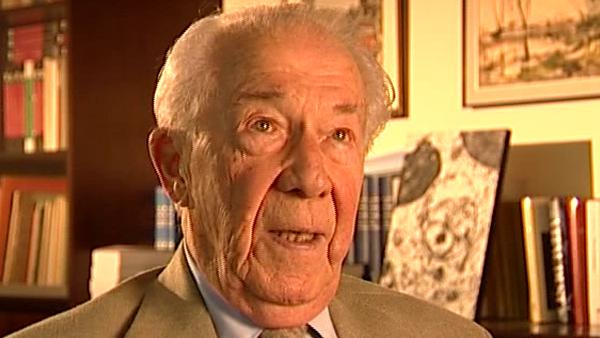NEXT STORY

The Lilly Research Labs: Making a re-discovery
RELATED STORIES

NEXT STORY

The Lilly Research Labs: Making a re-discovery
RELATED STORIES


|
Views | Duration | |
|---|---|---|---|
| 21. Writing to Carl Cori, and crystallised insulin | 206 | 03:14 | |
| 22. The Lilly Research Labs: Making a re-discovery | 203 | 03:40 | |
| 23. 'You will get a fur coat when I get a Nobel Prize' | 230 | 05:01 | |
| 24. Becoming Professor of Biochemistry at Louvain | 185 | 01:52 | |
| 25. Setting up a lab: A grant from Eli Lilly and Company | 151 | 02:40 | |
| 26. Setting up a lab: Difficulties getting equipment | 149 | 02:51 | |
| 27. Glucose 1-phosphate and glucose 6-phosphate | 187 | 03:55 | |
| 28. Purifying enzymes and visiting labs | 144 | 03:05 | |
| 29. The Rockefeller Institute and Albert Claude | 1 | 206 | 04:34 |
| 30. Centrifugal fractionation | 187 | 02:12 |


So I wrote to Carl Cori, and I still have his reply. By that time I could only spend six months away from... because I had started... I had been appointed in Louvain as a lecturer, and so he wrote and said, 'Sorry, but I can't take a fellow for more than... for less than one year, six months... so I can't take you. In addition, there is... with you, there is the additional difficulty that we do not see eye to eye, with respect to the mechanism of action of insulin.' So I was devastated and... but then a couple of months later I got another letter from Carl and he... the letter said, 'I want to get back to your request. Earl Sutherland in my laboratory has just found that the action of insulin on liver slices... the glycogenic action releasing glucose from glycogen is not due to insulin but to an impurity. I believe you have also done some work on this, and perhaps you might be interested in working with Dr. Sutherland.' Now, when he said, 'I believe you've already done some work', in fact, he was referring to what I would consider my first discovery. During the war, when I was writing this book and reading everything about insulin and trying to make sense of everything, I had run into a paper by a man called Bridge, published in 1938, in which he had truly found evidence that insulin would release glucose from liver glycogen. I won't go into the detail but the evidence was convincing. And so this worried me very much, because I said, 'Well, the evidence is there and I don't believe it is correct because I have other reasons to believe the opposite.' Fortunately, as I said, I had read a lot about insulin and in my reading I had read about an impurity that the early people who had started purifying insulin – in the United States, after it was discovered – had found as an impurity, and they had shown that this impurity could be removed when you crystallised insulin according to a rather complicated technique, developed by a man called Abel. And so crystalline insulin did not contain this hypoglycaemic impurity.
Belgian biochemist Christian de Duve (1917-2013) was best known for his work on understanding and categorising subcellular organelles. He won the Nobel Prize in Physiology or Medicine in 1974 for his joint discovery of lysosomes, the subcellular organelles that digest macromolecules and deal with ingested bacteria.
Title: Writing to Carl Cori, and crystallised insulin
Listeners: Peter Newmark
Peter Newmark has recently retired as Editorial Director of BioMed Central Ltd, the Open Access journal publisher. He obtained a D. Phil. from Oxford University and was originally a research biochemist at St Bartholomew's Hospital Medical School in London, but left research to become Biology Editor and then Deputy Editor of the journal Nature. He then became Managing Director of Current Biology Ltd, where he started a series of Current Opinion journals, and was founding Editor of the journal Current Biology. Subsequently he was Editorial Director for Elsevier Science London, before joining BioMed Central Ltd.
Tags: 1938, Carl Cori, Earl Sutherland, E M Bridge
Duration: 3 minutes, 14 seconds
Date story recorded: September 2005
Date story went live: 24 January 2008